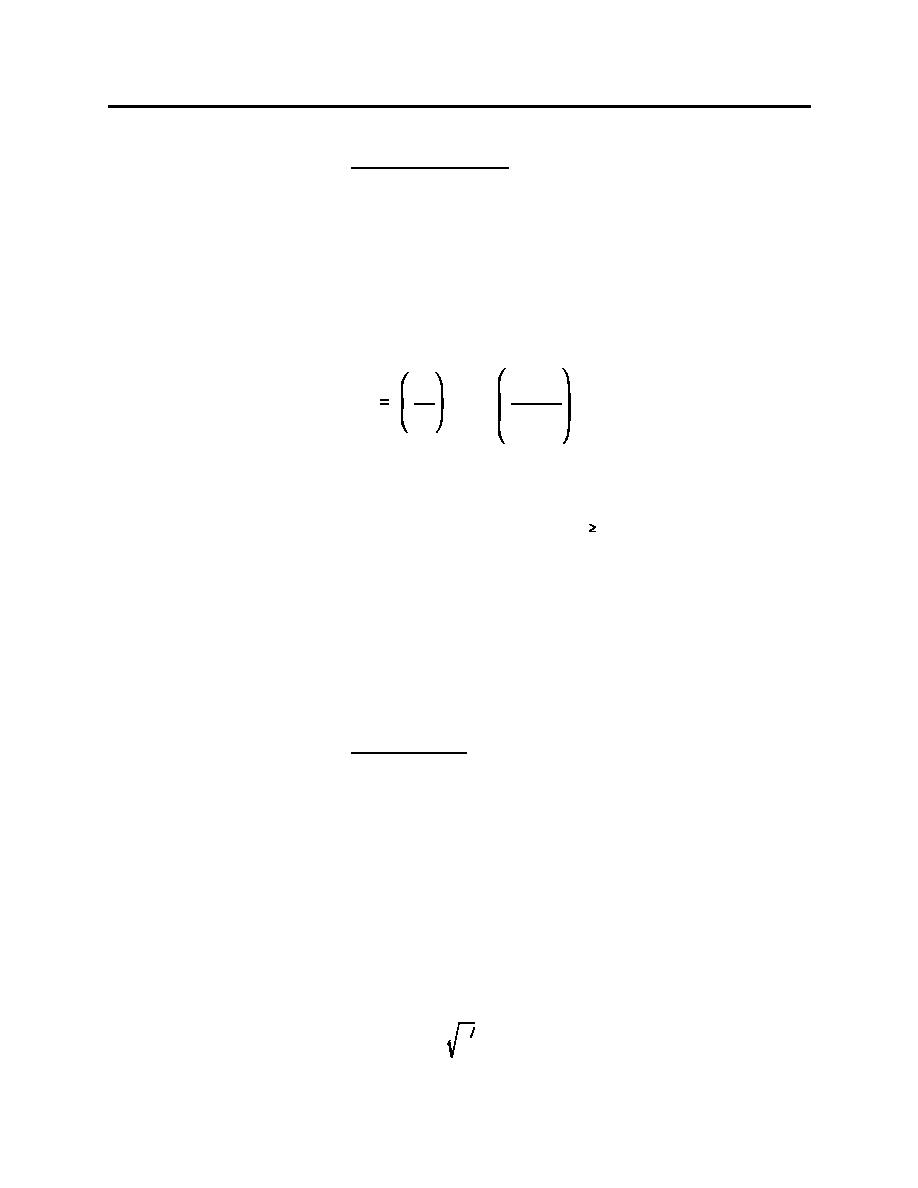 |
|||
|
|
|||
|
|
|||
| ||||||||||
|
|  DOE-STD-3014-96
Perforation Thickness. The perforation thickness (tp) is
6.3.2.1.2
defined as the panel thickness that is just great enough to
allow a missile to pass through the panel without any exit
velocity. The mean perforation thickness, tp (ft), for reinforced
concrete panels subjected to a cylindrical rigid
(nondeformable) steel missile impact, based on Reference 4,
is:
0.5
0.25
2
U
MV
tp
(6-2)
V
/
Dfc
The parameters U, V, M, D, and f/c are the same as those
defined in Equation 6-1. To prevent perforation, minimum
concrete thickness, td, should be
1.2 tp, where tp is given by
the above formula. Other formulas, as listed in Table I and
discussed in Appendix C, may also be used if applicable.
For further discussion and an example using these formulas,
refer to the technical support document for Chapter 6
(Reference 1).
6.3.2.1.3
Punching Shear. Missile impact on a concrete wall or slab
can induce shear failure, either near the periphery of the
impact area or at the edge of the wall or slab. The former is
called punching shear failure, and the latter is known as the
reaction shear failure. The following punching shear criterion
is applicable for this standard. For design against punching
shear, capacity is limited by the diagonal tension failure in the
concrete adjacent to the load. The ACI 318 and ACI 349
Codes (References 7 and 8) limit the punching shear stress
(psi) to
4 fc
68
|
|
Privacy Statement - Press Release - Copyright Information. - Contact Us |